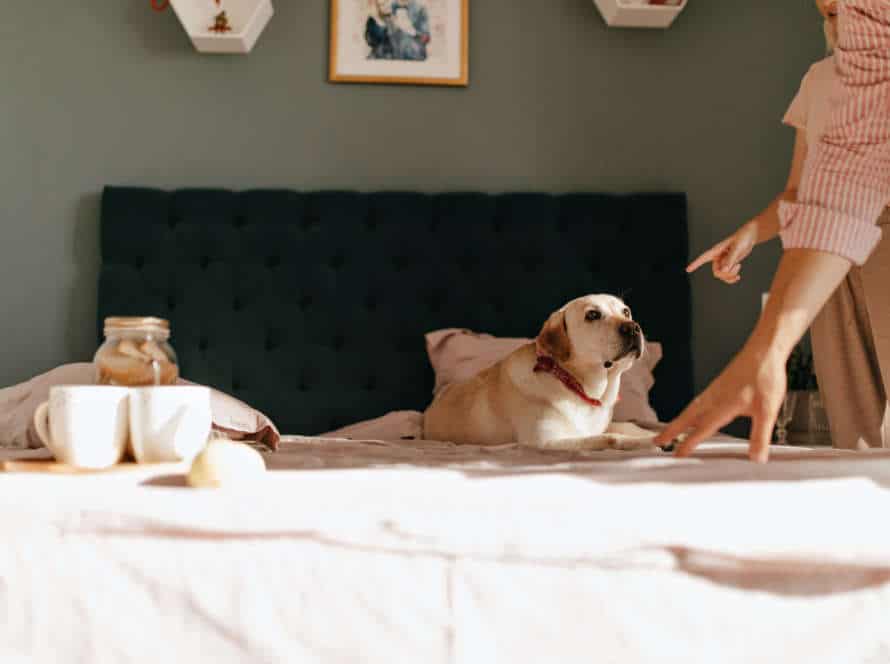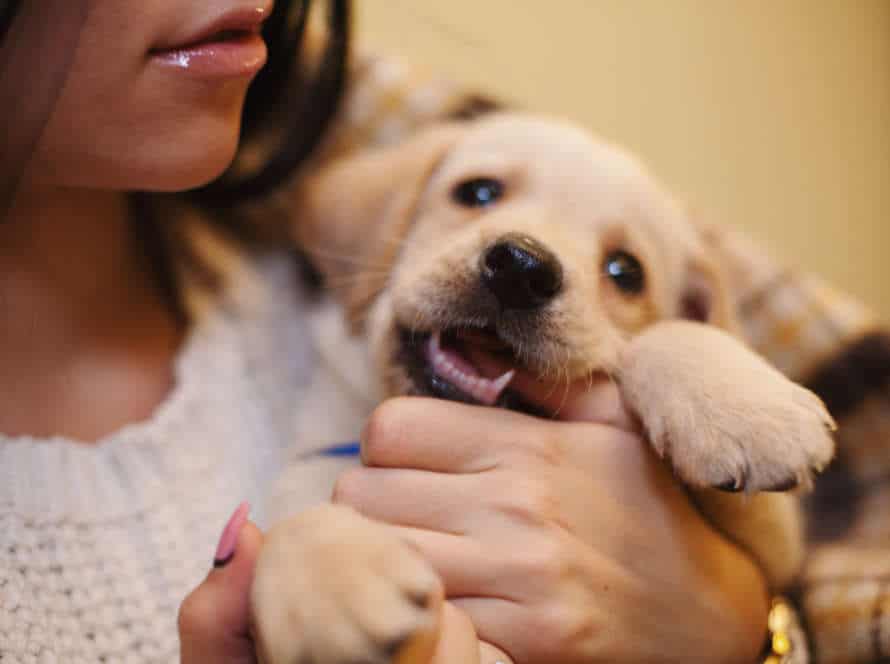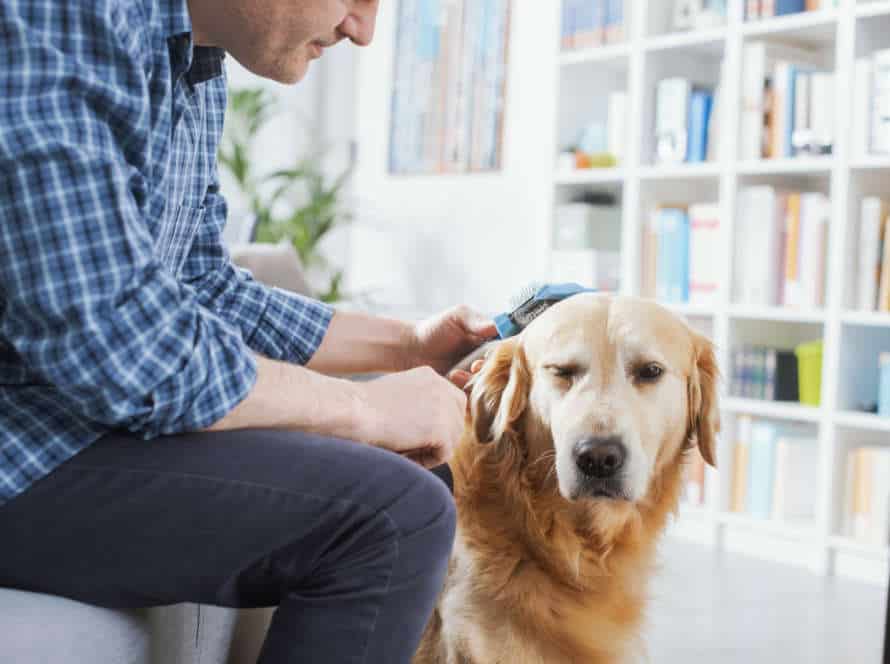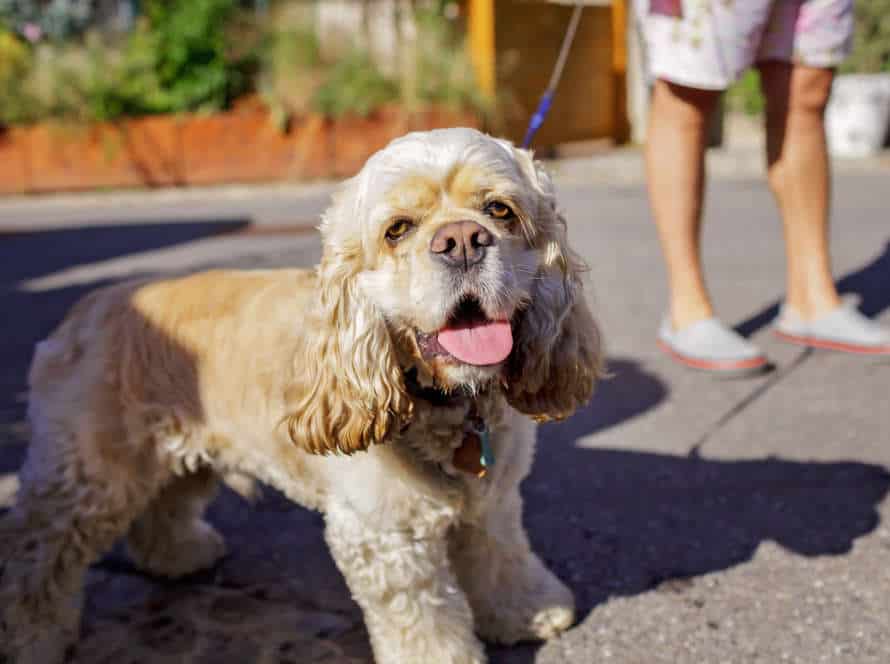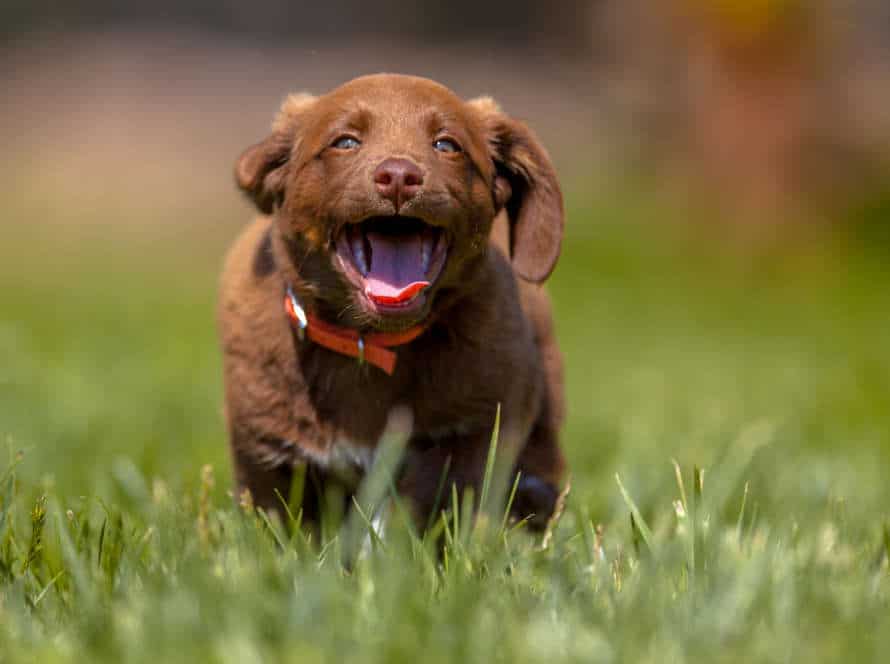Nighttime Potty Breaks: Integrating Them into Crate Training
It’s important to add nighttime potty breaks to crate training. Here are the tips:
- Establish a routine. Take pup to designated spot and give a command, e.g. “go potty”.
- Limit water intake before bedtime. No water for 2 hours before bed.
- Set a specific time for nighttime potty break. E.g. if pup usually wakes up at 2am, set an alarm and take them out at this time every night.
- Use a command to signal potty time. E.g. “Let’s go outside!”
- Be patient and consistent. With a bit of time and effort, pup will learn to hold bladder through night, making lives easier.
Understanding Crate Training
Crate training is a favorite for helping puppies fit in their new home and learn potty training. It’s about teaching pups the crate is their own safe den. Before using it, it’s important to understand how it works. Here’s a look at how crate training works and integrating nighttime potty breaks.
Why Crate Training is important for puppies
Crate training is crucial for pup’s health and safety. Here’s why:
- Housebreaking: Crate training aids in bladder control, so pups avoid accidents indoors. They also learn to recognize their crate as a safe space to relax and sleep.
- Destructive behavior prevention: Provide pups with a confined space and fill it with toys and treats. This helps distract them from hazardous play inside your home.
- Security: Pups can wander into dangerous places without supervision. A crate provides a secure and comfortable environment for your pup.
- Nighttime potty breaks: Crate training helps them form good habits, like holding their bladder until their morning potty break.
Pro tip: Choose the right-sized crate and make the experience positive with treats and toys!
When to begin crate training
As soon as you get your new pup, start crate training. This is a great way to set up limits, teach pup independence and stop bad behaviors like chewing and housebreaking accidents. Including nighttime potty breaks in the crate training is key for your pup’s comfort and health. Here are some tips to help:
- Create a routine and take pup out for a potty break every 2-3 hours.
- Extend the time between breaks as pup grows and can hold their bladder longer.
- Don’t feed pup before bedtime to reduce the chance of nighttime accidents.
- Reward pup with treats and praise when they do their business outside.
Pro Tip: Be patient and consistent with crate training. Make sure pup’s crate is cozy and safe – never use it as punishment. Eventually, pup will start to love their crate as their personal space.
How long should crate training take
Crate training times vary, depending on things like age, prior experiences, and temperament. It’s usually a few days up to a few weeks. Here are some tips to help:
- Make sure the crate is the right size, with comfy bedding and toys.
- Introduce your dog to the crate slowly, using treats and praise.
- Start with short training sessions, a few minutes at first.
- Always use positive reinforcement.
- Set a routine so your pup knows when they’re in the crate and when they can leave.
- For puppies and older dogs, nighttime potty breaks can help with crate training.
Pro tip: Be patient and praise your pup often for successful crate training!
Potty Training Your Pup
Crate training is a great approach to potty-train pups. Restricting their space helps take ’em outside to do their business. To make crate training successful, nighttime potty breaks are key. In this article, we’ll explain how to include nighttime potty breaks in crate training.
How to know when your puppy needs to go potty
Pups are aww-dorable! But potty trainin’ ’em can be tricky. Here’s some signs to watch out for that yer pup needs to go and tips for nighttime potty breaks:
- Sniffin’, whinin’, barkin’, scratchin’ at the door, circlin’ or squattin’.
If you’re crate trainin’, set up a schedule. A good rule of thumb is puppies can hold their bladder for one hour per month of age – so a two-month-old pup should not be left for more than two hours.
Take ’em out first thing in the mornin’, after eatin’ or drinkin’, after nappin’, and before bedtime. And don’t forget nighttime potty breaks – take ’em out before bed and once in the middle of the night, then gradually increase the time between breaks as they get older.
Pro Tip: Be consistent and patient, and don’t forget to praise and reward ’em for good behavior!
Establishing a potty schedule
Forming a potty routine is essential for potty-training your pup. Adding nighttime potty breaks to crate training helps your pup settle into a healthy pattern and keeps messes from happening.
Here’s how to do it:
- Schedule specific times for your pup to go potty – like first thing in the morning, after meals, after naps, and before bed.
- Use a crate to help your puppy learn bladder control and stop messes at night. Make sure the crate is just the right size and comfortable, with a blanket or toy inside.
- Take your pup to their designated potty area right before bedtime.
- Wake your pup up once during the night for a potty break. Use a special cue to tell your pup it’s time.
- Return your pup to the crate after they’re done, and give a treat as a reward.
- Gradually increase the time between nighttime potty breaks as your pup gets better at bladder control.
Potty training tips for nighttime
Potty training your pup is necessary. Include night potty breaks in the crate training process for success. Here are some tips:
- Cut down water two hours before bedtime.
- Take pup for a break before and after sleeping.
- Set up a crate or sleep space for pup.
- Put a pee pad or absorbent material in the crate.
- If pup wakes in night, take them out for a short break then return to the crate.
- Be persistent with the training and be patient, as it may take time for pup to hold their bladder during the night.
The Role of Potty Breaks in Crate Training
Crate training pups? Nighttime potty breaks are key! They offer relief, plus help form good potty habits. This means fewer accidents in the crate. Make sure to include nighttime potty breaks – it’ll give your pup the best chance of success!
Why Potty Breaks are important at night
Potty breaks are a must for crate training at night. They help with bladder control, and stop accidents.
Puppies have tiny bladders, so they can’t hold it the whole night.
Here are tips for potty breaks during crate training:
- Schedule potty breaks every few hours, and extend the time as puppy gets older.
- Use the same command like “go potty” to let your pup know it’s time.
- Take them to the same spot each time, so they link it to potty time.
- Keep it short, no playing. This avoids overstimulation and difficulty falling back asleep.
Remember, consistency is key for successful crate and potty training!
How frequently should you take your puppy out at night
If crate-training a young pup, you’ll need to take them out many times at night to use the loo. A good rule of thumb is one hour of bladder control per month of age. Here’s what to do when taking pup out at night:
- Take pup out before bed to make sure they’ve emptied their bladder.
- Plan to take pup out every 2-3 hrs for the initial weeks.
- Be consistent with the timing of potty breaks so pup knows when to go.
- Don’t give food/water before bedtime to avoid accidents.
- Praise and reward pup for going potty outside – this’ll help them hold their bladder longer. Gradually, you can decrease the night time potty breaks.
How to effectively integrate nighttime potty breaks into crate training
Integrating nighttime potty breaks into crate training is key for successful puppy training. It helps your pup learn bladder control. Here’s how to make it work:
- Set a regular feeding schedule for your pup.
- Take them outside 10-15 minutes after eating.
- Before bedtime, make sure they’ve had a potty break.
- Put them in the crate with a comfy bed and safe toys.
- Set an alarm for 2-3am and take them out for a quick potty break. Don’t play with them so they can get back to sleep.
- Increase the time between nighttime potty breaks as they get older and can hold their bladder longer.
Pro Tip: Consistency is important. Be diligent in their feeding and potty break schedule to make sure you integrate nighttime potty breaks into crate training successfully!
Making Nighttime Potty Breaks Successful
Crate training your pup or doggo is super important. It sets boundaries, shows them the house rules and stops accidents in the home. But even if you have a good schedule, nighttime potty breaks may still be necessary. To make nighttime potty breaks successful, you need careful planning. Here’s how to do it:
Set a consistent bedtime routine
Develop a regular bedtime routine to help with crate training nighttime potty breaks. Here are some tips:
- Pick a bedtime that fits both you and your pup. Be consistent.
- Create a calming atmosphere. Dim the lights, turn off music/TV.
- Take your pup outside for a potty break before bed.
- Put pup in crate. Give reassuring pat/word.
- No late-night snacks/drinks. Avoid food/water for several hours before bed.
By establishing a consistent bedtime routine, you can help pup adjust to nighttime potty breaks and make crate training a success!
Create a comfortable and safe setup for your pup
Integrating Nighttime Potty Breaks into crate training for your pup is vital for successful house-training. Yet, it’s also important to create a comfy and secure setup for your furry friend to make nighttime potty breaks successful.
To achieve this, here are some tips:
- Pick a crate that’s the right size, allowing them to stand up, stretch, and turn around with ease.
- Put blankets, a soft bed, and a few chew toys in the crate to make it cosy and alluring.
- Place the crate in a peaceful and low-traffic area of your home, away from any loud noises, bright lights, or disturbances that might disrupt your puppy’s sleep.
- Establish a consistent potty-break schedule, taking your puppy outside to their designated potty spot at night.
By following these steps, you can guarantee your puppy is comfortable, protected, and ready for successful nighttime potty breaks during crate training.
Use Positive Reinforcement to motivate your pup to go potty outside
Positive reinforcement is the way to go for motivating your pup to pee outdoors, specially for night-time potty breaks. Here’s what to do:
- Say a specific command, like “go potty“, when your pup starts peeing outside.
- Reward them with a treat and nice words like “good job” or “well done” when they’re done.
- Same command and positive reinforcement should be used every time for desired behavior.
- You can also add nighttime potty breaks to the crate training. Make a schedule, use positive reinforcement and slowly increase the time gap between potty breaks as the puppy grows.
With consistent positive reinforcement and crate training, your pup will soon be using the potty outside regularly.
Troubleshooting Common Issues
Crate training a pup can be a difficult experience for new pet owners. Pups may have specific behaviours or issues that make crate training challenging. One such issue is nighttime potty breaks and accidents in the crate. In this article, we’ll explain these issues and provide helpful tips for making nighttime potty breaks part of crate training.
What to do if your pup is reluctant to go out for potty breaks
If your pup is not keen on going out for potty breaks, crate training with nighttime potty breaks may be the solution. Here’s what to do:
- Start by setting up a crate with a comfy bed and a water bowl close enough for your pup to access.
- Take them outside for a potty break just before bedtime. Encourage their business with treats and praise.
- Put them in the crate and set a timer for a few hours. This depends on their age and bladder capacity.
- When the timer rings, take them out for another potty break. Reward them with treats and compliments.
- Repeat this until your pup can go through the entire night without needing a potty break.
What to do when your pup wakes up crying at night
If your pup cries at night, they may need to go potty. Crate-training can help them learn to ‘hold it’ while you sleep. Here’s how:
- Find an outdoor spot for nighttime potty trips.
- Stick to the same schedule, once or twice a night.
- Don’t play or stimulate the pup on these breaks.
- After the break, return them to their crate.
- Be patient and get a comfy crate pad for them. Then, you’ll both sleep soundly!
How to transition away from nighttime potty breaks as your pup matures
Transitioning your puppy away from nighttime potty breaks can be difficult. Here are tips to make it smoother:
- Gradually increase the time between potty breaks. Start by adding 15-30 minutes each night, until your puppy can stay dry all night.
- Reward with treats or praise when they stay dry.
- Limit water intake before bed.
- Crate train to teach bladder control.
- Be patient and consistent if your pup experiences setbacks. Each puppy is different, so more time may be needed.
Frequently Asked Questions
1. Why do I need to integrate nighttime potty breaks into crate training?
Nighttime potty breaks are important because puppies have smaller bladders and need to go out more often. Integrating them into crate training helps establish a routine and helps prevent accidents in the crate.
2. How often should I take my puppy out for a nighttime potty break?
In the beginning, puppies may need to go out every 2-3 hours. As they get older, they may be able to hold it for longer periods. It’s important to pay attention to your puppy’s cues and take them out when they indicate they need to go.
3. Should I give my puppy water before bedtime?
It’s best to limit your puppy’s water intake a few hours before bedtime to avoid them needing to go out during the night. However, make sure they have access to fresh water throughout the day.
4. How do I know if my puppy needs a nighttime potty break?
Some signs that your puppy needs to go out include whining, scratching at the crate, and sniffing around. Keep an eye on your puppy’s behavior and take them out if you suspect they need to go.
5. What if my puppy has an accident in the crate during the night?
Accidents can happen, especially if your puppy is still in the process of being potty trained. Clean up the crate thoroughly using an enzymatic cleaner to remove any odor that may attract your puppy to go in that spot again. Consider taking them out more frequently at night to prevent future accidents.
6. Can I gradually decrease the frequency of nighttime potty breaks?
Yes, as your puppy gets older and more familiar with the routine, you can gradually decrease the frequency of nighttime potty breaks. However, always pay attention to your puppy’s cues and adjust accordingly.



